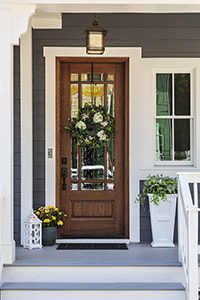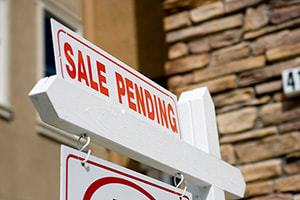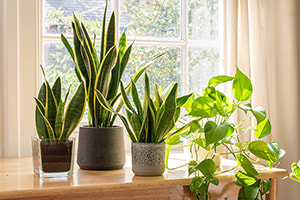 A typical step in nearly every home-buying process is a home inspection. This is when a certified home inspector examines the house's structure and systems looking for issues such as a cracked foundation, significant termite damage, or improper wiring. The inspection usually occurs after a purchase offer has been accepted and can be a point of renegotiation should problems turn up. When you're in a seller's market, competition among buyers can lead to bidding wars, causing some buyers to waive contract contingencies such as the home inspection. Redfin, a nationwide real estate listings website, revealed that by midyear 2020, 1 in 5 of the accepted offers handled by their agents included a waiver of the home inspection. But is it a good idea to skip a home inspection? Waiving a Home Inspection Contingency Is Risky It's one thing to have to fix a faulty furnace or replace a dishwasher, but it's another thing entirely if a home has major structural damage. Any structural repairs are costly and sometimes even impossible to fix. Your mortgage provider might even insist on a home inspection before approving your loan depending on when the home was built and where it's located. There are Other Ways to Boost Your Bid When you fall in love with a house and would do anything to get it, you might be tempted to forgo the safeguard a home inspection provides. Consider these alternative options for making your bid stand out: You could remove the appraisal contingency, meaning you'd have to bring more cash to the table if the home doesn't appraise for an amount that suits your mortgage lender. You could be flexible with the closing date, allowing the seller to set the timeline for moving. You could also offer to pay the seller's closings costs. These solutions all mean coming up with more cash, but eliminating the inspection could also wind up being costly. Protect Yourself as Best You Can If you're in an extremely competitive market with multiple-bid situations that might require waiving your contingencies, you could have a contractor or inspector tour homes with you. They might notice problems you don't, and if the problems are big enough, you'll know to avoid the home entirely. Home warranties can also be purchased for around $400 for one year and can be extended for years with additional premiums. To protect yourself further, search public records to see if any permits have been issued for major work on the property, as any large jobs require permits. In hot markets, bidding wars among home buyers are common. It might be tempting to waive your home inspection contingency to make your bid stand out. Consider carefully, though, before taking such a risk and try to protect yourself against any possible ramifications.
0 Comments
 Your home's front exterior—the lawn, landscaping, siding, and front door—is what passersby see from the street. It's called curb appeal, and it's a key factor in promoting the sale of your home. Curb appeal is the first impression a potential homebuyer will have of your home, and the first quick assessment they will make before they even step foot inside the door. Use these ideas to make your home stand out and catch buyers' attention. Freshen Up Your Front Door Make your front door livelier with a fresh coat of paint. Choose black paint for a classic, elegant mood; white for a fresh, crisp appeal; red for an energetic, inviting appearance; or blue for an uplifting, calming feel. Hang a seasonal wreath on your freshly painted front door, and add a shiny door knocker, kick plate, and door handle as finishing touches. Replace an old doorbell with a modern substitute, and exchange small, faded house numbers for large, bold replacements. Frame Your Windows If you want to set apart your home's curb appeal from similar real estate listings, it's all in the details. Framing your front windows with chic shutters adds charming character. Coordinate your shutter selection to complement the architectural style and existing color of your home. Install rustic board-and-batten shutters to enhance a French country style, or mount traditional black shutters to add classic vibes to a white farmhouse design. Window boxes full of beautiful greenery and flowers all heighten visual appeal. Redo Your Front Porch Updating a lifeless front porch will add energy and create much-improved curb appeal for your home. Paint an aged concrete porch with paint designed for outdoor porches and floors. White will brighten up the space, while gray is an alternative neutral that shows less dirt and scuffs. Hang an inviting porch swing from the ceiling of a large, covered porch, or add a stylish bistro table to a smaller porch. A pretty outdoor area rug adds comfort, texture, and color. Hang a few robust plants from your porch ceiling or posts for gorgeous, natural accents. If your overhead light outside your front door is outdated, choose a stylish alternative to give your front porch modern appeal. Real estate listings with great curb appeal get more buyer interest and usually sell for more. Evaluate the curb appeal of your home and use these tips to upgrade and revamp the areas that need improvement.  For the 107th month in a row, national home prices climbed year over year, according to the National Association of Realtors (NAR). Every sales region in the country posted price increases, with the median existing-home price rising 14.1% from a year earlier. The rising sales prices, however, did little to deter buyers, as every sales region posted year-over-year double-digit increases in existing-home sales. When comparing month-over-month sales activity, rates varied from region to region. The demand for homes is reflected in the rate at which homes are remaining on the market. In January, the average home sold in just 21 days, unchanged from December but down significantly from the 43 days a home remained available just a year ago. Of all the homes sold in January 2021, 71% were sold in under one month. Buyers Compete for Scarce Listings The high demand for homes is reflected in the ongoing housing shortage. At the end of January, there were just 1.04 million homes available for sale, down 25.7% year over year. NAR has never recorded a decline in inventory so severe. At the current sales pace, the stock of houses would supply the market for only 1.9 months, unchanged from December but down from the 3.1-month supply recorded a year ago. According to Lawrence Yun, chief economist for NAR, "Home sales continued to ascend in the first month of the year, as buyers quickly snatched up virtually every new listing coming on the market." He adds that sales could have been as much as 20% higher if there was more inventory on the market and buyers had more choices. Housing Remains a Bright Spot in U.S. Economy Unlike other parts of the U.S. economy, the housing market seems to be immune to the effects of COVID-19. In every tracked metro area, home prices increased during 2020's fourth quarter. "Home sales are continuing to play a part in propping up the economy," said Yun. "With additional stimulus likely to pass and several vaccines now available, the housing outlook looks solid for this year." In addition, as employment rates continue to improve, homebuying is expected to increase in the coming months. According to Yun, existing-home sales will climb to a minimum of 6.5 million in 2021. Though he predicts rising mortgage rates due to budget deficits and climbing inflation, Yun believes sales will remain strong. First-Time Buyers See Potential First-time buyers accounted for 33% of all purchases in January, up from 31% a month ago and 32% a year ago. According to the NAR "2020 Profile of Home Buyers and Sellers," first-time buyers made up 31% of the buying public in 2020. Individual investors and second-home buyers—a group who account for most all-cash sales—were responsible for 15% of all home purchases, up from 14% in December but down from 17% in January 2020. Of all sales transactions, 19% were all cash, unchanged from a month ago but down from 21% a year ago. Meanwhile, distressed sales—including foreclosures and short sales—accounted for fewer sales, representing just 1% of all transactions in January. This was unchanged from a month ago but down 2% from January 2020. Regional Breakdown Nationwide, January's existing-home sales climbed to a seasonally adjusted annual rate of 6.69 million. This was a 0.6% increase month over month and a 23.7% increase year over year. Northeast - Existing-home sales annual rate of 870,000; a decrease of 2.2% from December 2020 but an increase of 24.3% from January 2020. The median sales price, $361,400, increased 15.8% from January 2020. Midwest - Existing-home sales annual rate of 1.57 million; an increase of 1.9% from December 2020 and 22.7% from January 2020. The median sales price, $227,800, increased 14.7% from January 2020. South - Existing-home sales annual rate of 2.94 million; an increase of 3.2% from December 2020 and 25.1% from January 2020. The median sales price, $263,300, increased 14.6% from January 2020. West - Existing-home sales annual rate of 1.31 million; a decrease of 4.4% from December 2020 but an increase of 21.3% from January 2020. The median sales price, $461,800, increased 16.1% from January 2020.  Houseplants are often the bane of busy people. Unlike pets, they have no voice to plead for a drink of water or food. They cannot crawl out of their crowded pots or move to a sunny spot. Completely dependent on our care, they seemingly thrive for a week or two before suddenly dying. So what can you do to keep your houseplants alive and growing? Follow these simple tips that will make your plants happy enough to produce chlorophyll (the green pigment), stand up straight, and maybe even force out some flower buds. Put your plants on a watering schedule. Write it on a calendar in advance. Dedicate a day each week to checking the moisture level in your houseplants’ soil and watering when necessary. Do not overfeed. Using plant food too aggressively can burn a plant’s roots, killing it from the ground up. Feed every couple of months—and that’s only if you remember to water regularly! Repot when necessary. Houseplants that have survived the years are often forgotten in their too-tight planters. Keep a bag of potting soil handy so that you can repot when their roots are straining against the terracotta bowl or peering over the porcelain planter. Follow the care instructions. Some plants love to bask in the sunlight, while others hide in the shade. Still others are somewhere in the middle. Find the proper window for your little beauties, and they will be more willing to blossom under your care. If they seem to be adjusting poorly to one location, move to another less-extreme spot (but don’t go from direct sun to full shade—this will shock the poor thing!). Dust your plants. That’s right—even if you don’t dust the furniture. Take a damp cloth to the leaves. This will keep them shiny and allow them to “breathe.” After all, if they’re under a layer of grime, you can’t see that they’re alive and green! Taking care of houseplants shouldn’t be a chore, even though it may seem like one. Following these few simple guidelines will help you keep your plants green and growing—at least until you go on vacation. |
AuthorBe informed with the latest real estate news and useful real estate related information. Archives
March 2025
Categories
|
